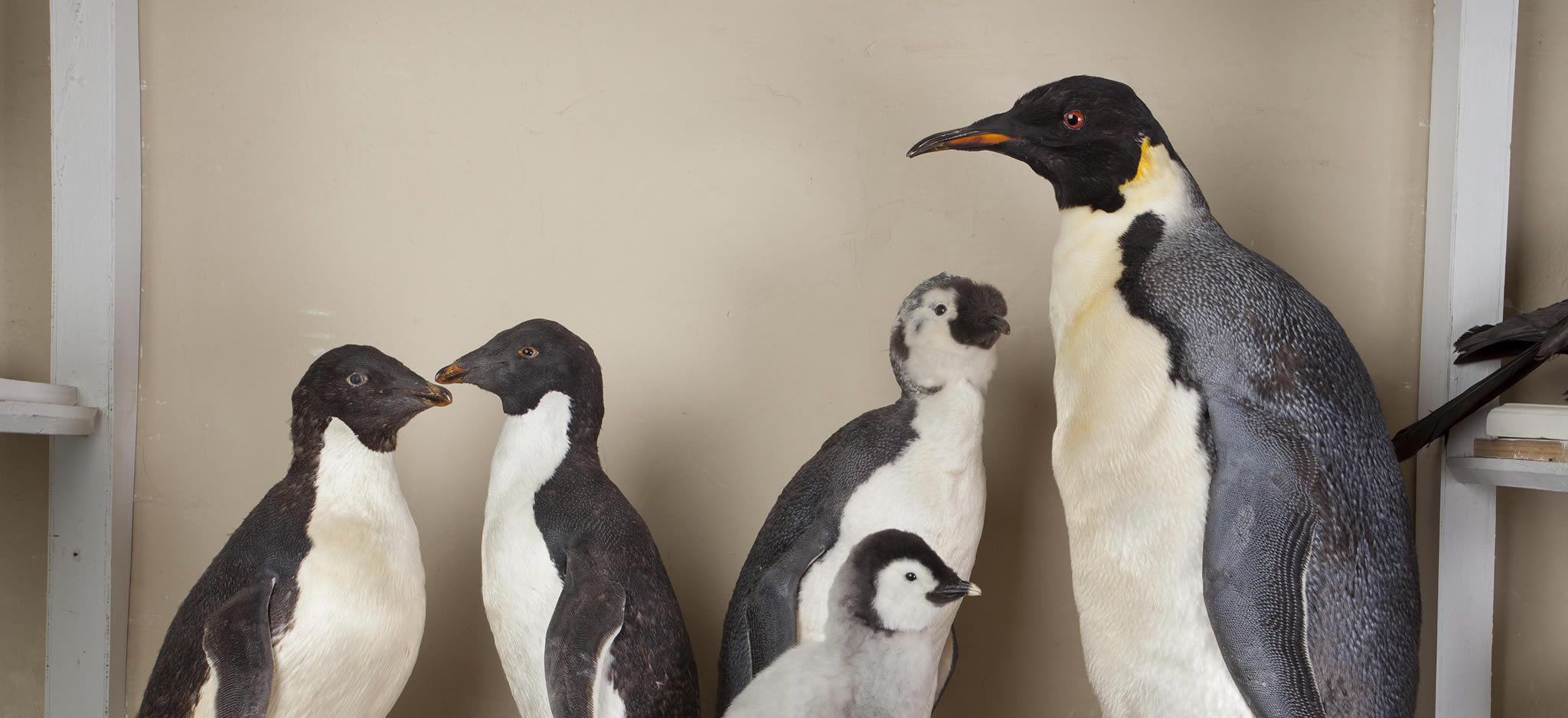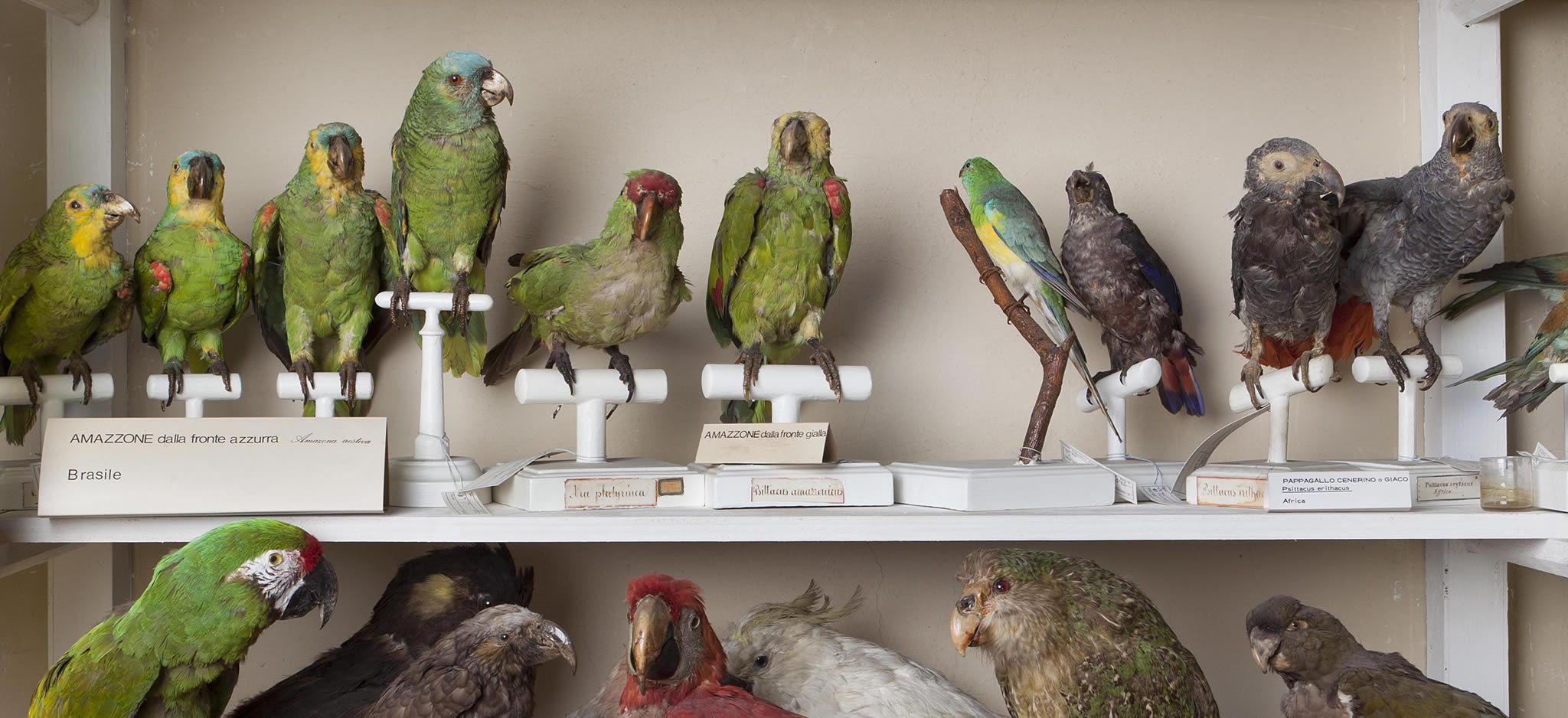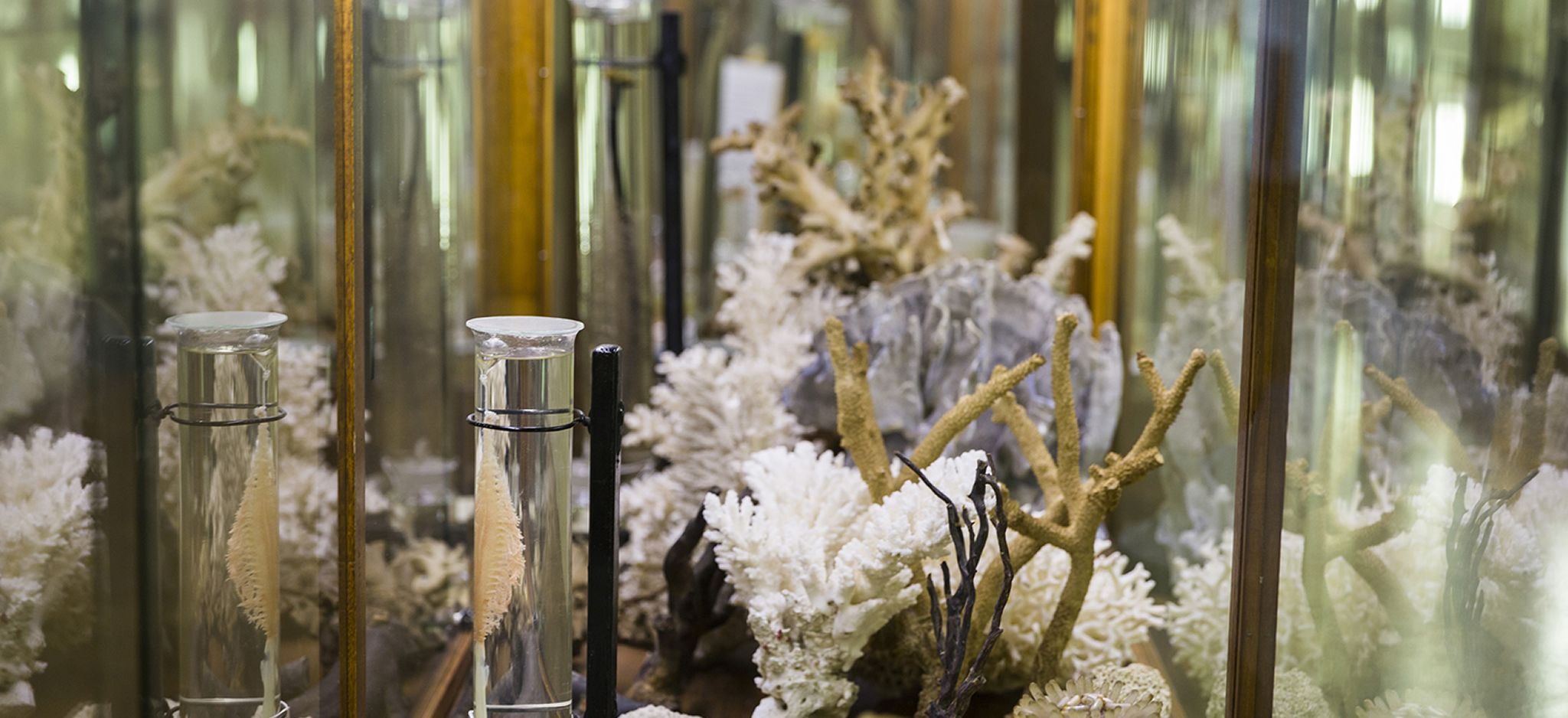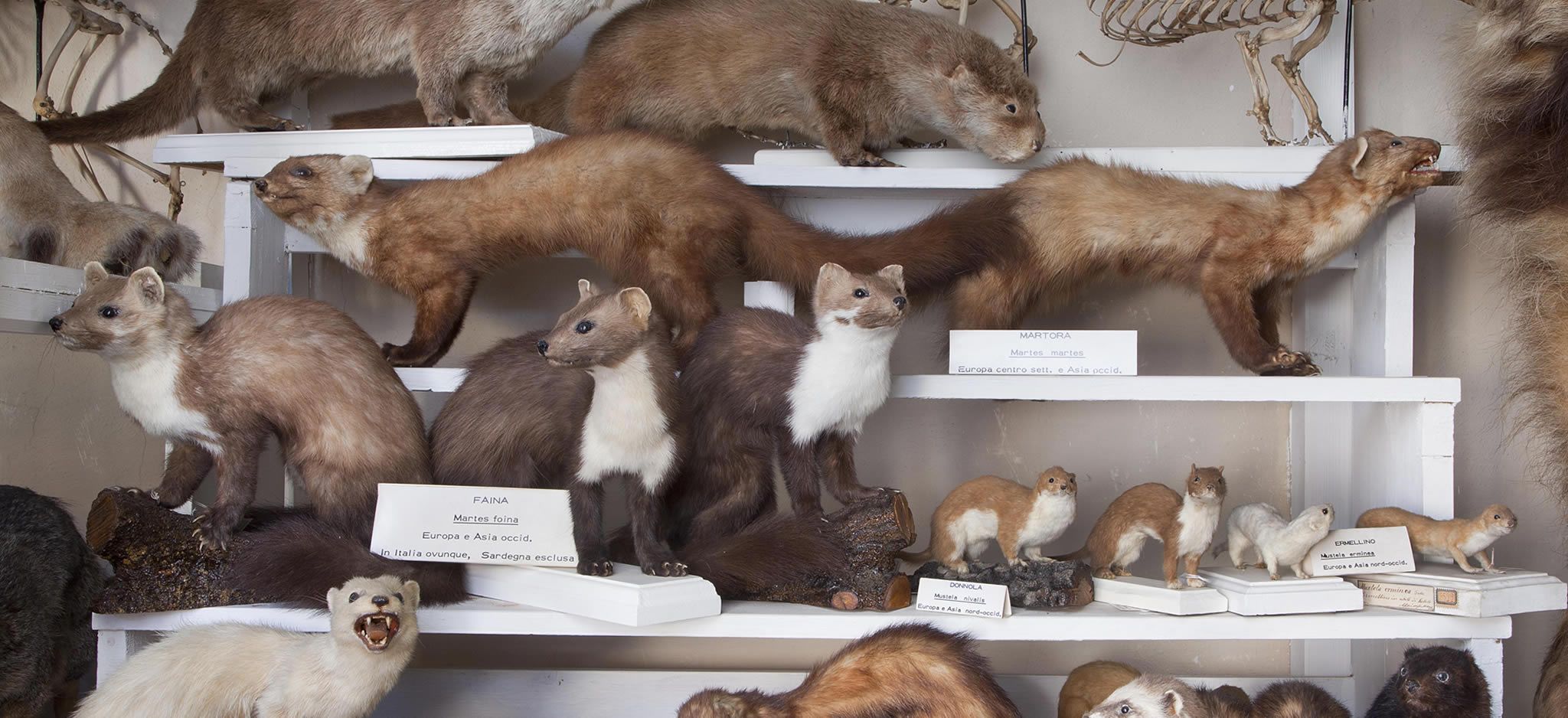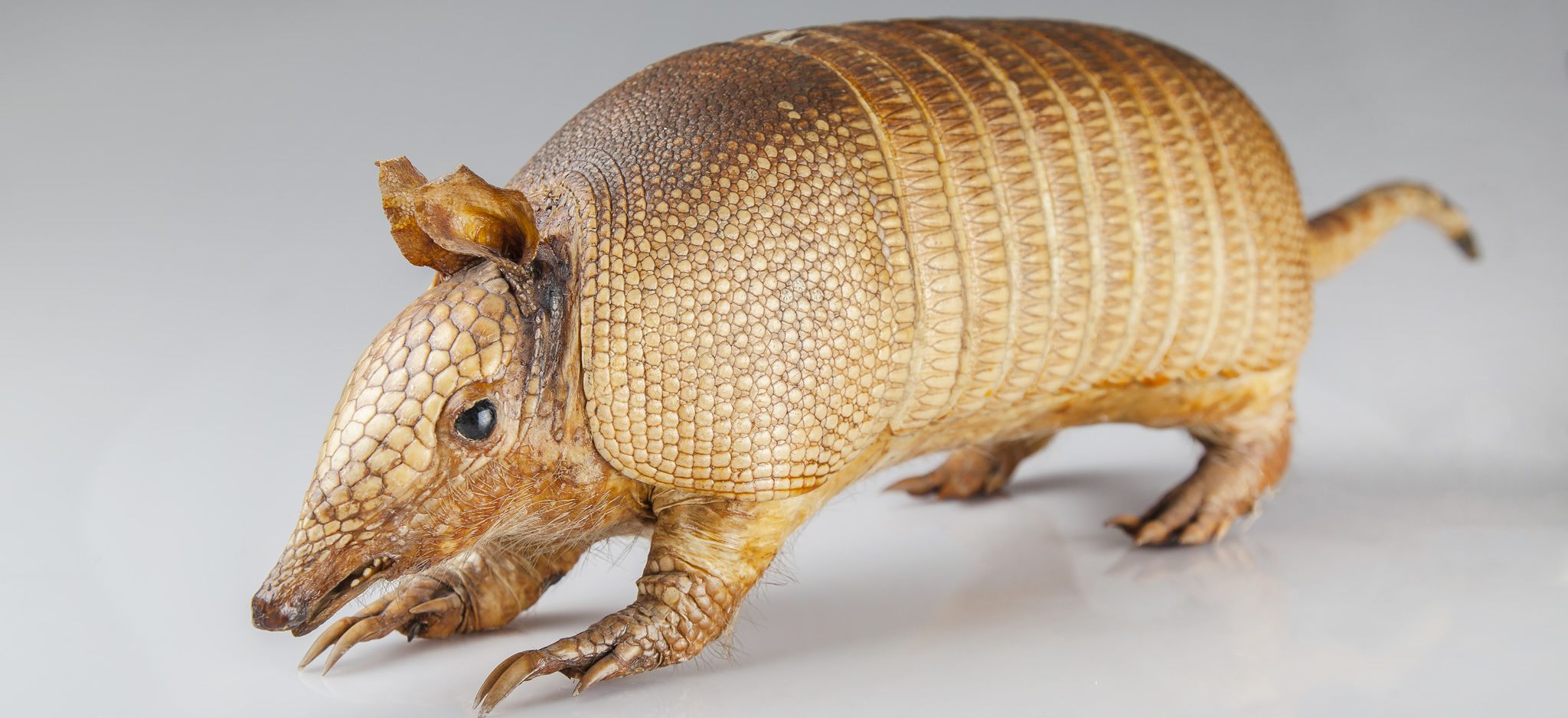The animal collections, enhanced by their nineteenth century show cases, bring together many specimens of vertebrates (stuffed and mounted in natural poses), skeletons, spirit material, shells of molluscs and cases of insects.
The bird collection includes about 3000 items and the mammal collection almost 700, with specimens from all continents, including many rare species and an example of the now extinct Eskimo curlew.
The value of the collections attracts many scholars from other parts of Italy and abroad, and provides study material for researchers of the University of Siena.
The taxidermy laboratory of the museum ensures the preparation, maintenance and restoration of all exhibits.
In observance of today’s laws and ethics, new material acquired or prepared was not captured, unlike in the past, but comes exclusively from legal confiscations and recovery of animals dying of other causes.
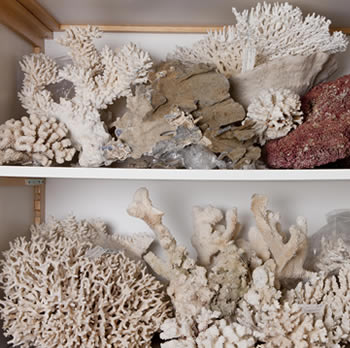
MARINE INVERTEBRATES
The many dried and alcohol specimens offer a panorama of marine biodiversity. In the cases in the centre of the corridor there are sponges (Porifera), corals and madrepores (Cnidaria), fanworms (Anellida), sea urchins and sea stars (Echinodermata), crustaceans (Arthropoda) and ascidians (Chordata). Read more
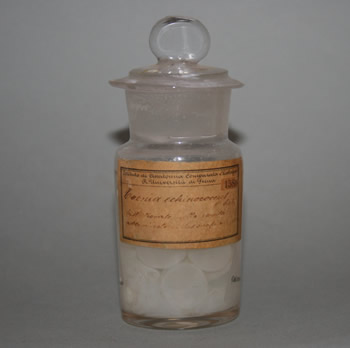
PARASITES
The collection consists mainly of spirit specimens of intestinal parasites, including tapeworms (Platyhelminthes) and roundworms (Nematoda). Read more
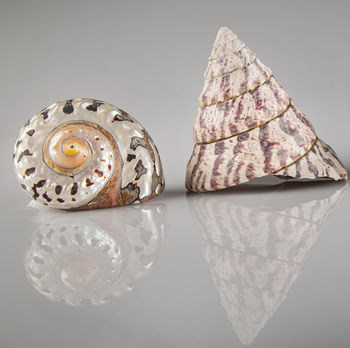
MOLLUSCS
This collection holds hundreds of coloured shells, mainly from the tropics and the Mediterranean. It includes a nineteenth century collection of Tuscan land and freshwater snails and some spirit specimens. Read more
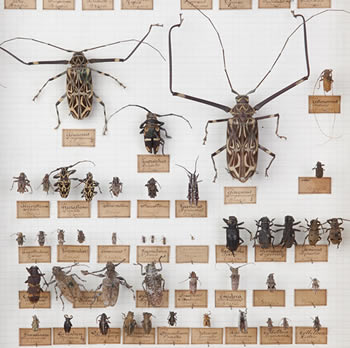
INSECTS
A selection of cases with insects belonging to historic collections, with local and exotic specimens, is on show. There are tropical butterflies and beetles of all sizes and colours. Read more
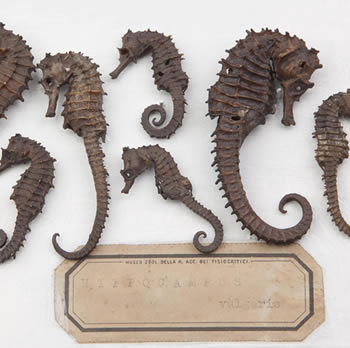
FISH
Nearly all the specimens on show are species that were available in fish markets. Read more
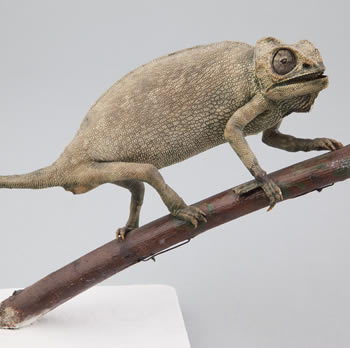
AMPHIBIANS AND REPTILES
This collection includes a small number of Italian amphibians and various European and exotic reptiles, stuffed or in spirit. Read more
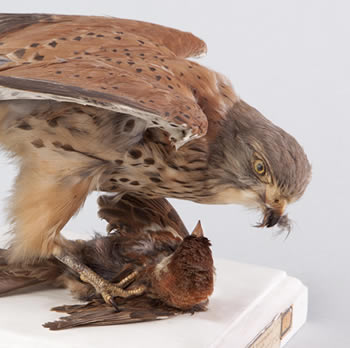
BIRDS
With about 3000 specimens belonging to more than 800 species, the bird collection is the third most important in Tuscany. Read more
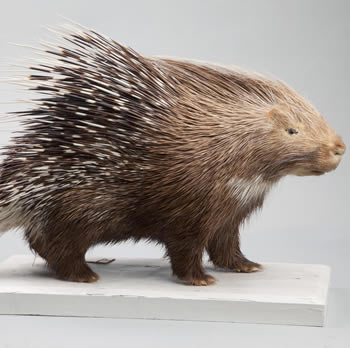
MAMMALS
After the bird collection, the mammal collection is the second most important in the Zoology Section. It contains almost 700 specimens belonging to about 150 species. Read more
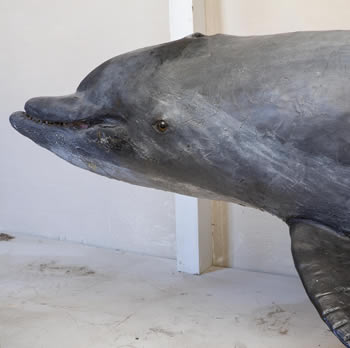
CETACEANS
The marine mammal collection includes more than 140 specimens, most of which are not displayed. The prize specimen is a 15-metre fin whale skeleton, recovered near Piombino and mounted in the courtyard. Read more



